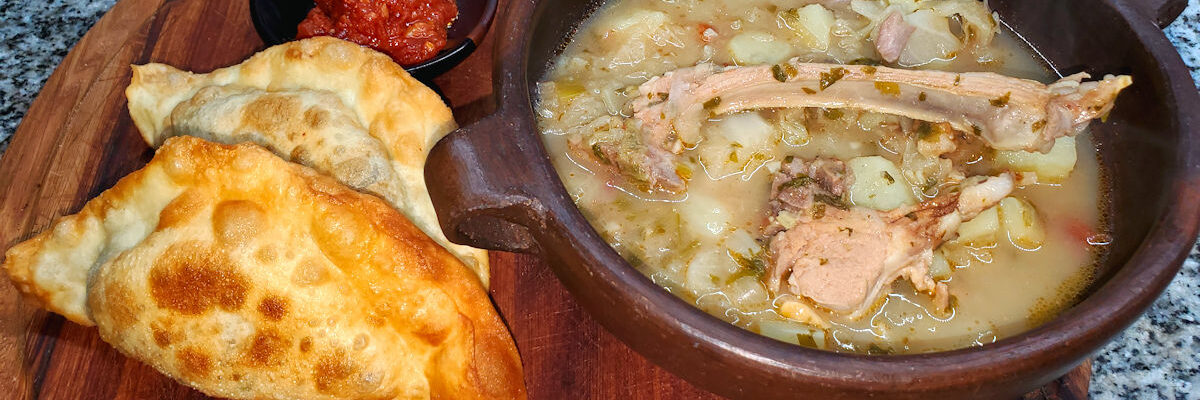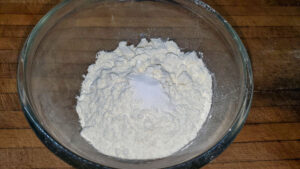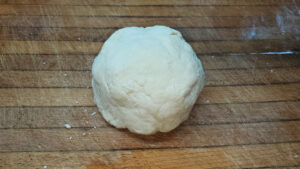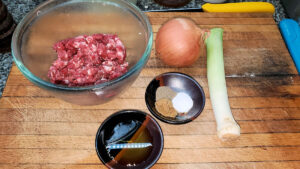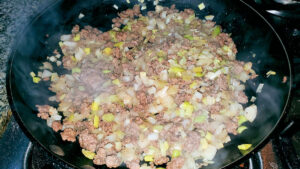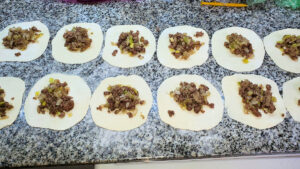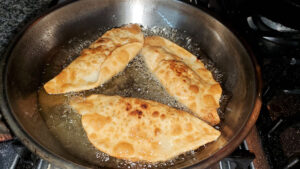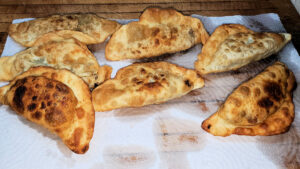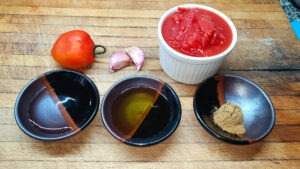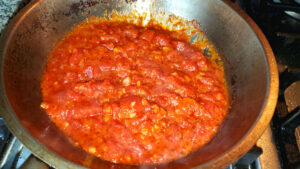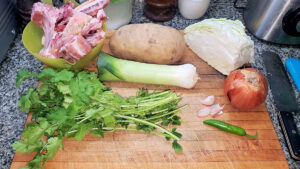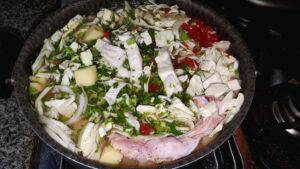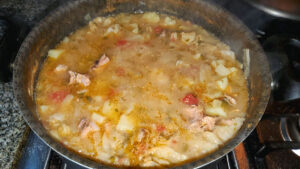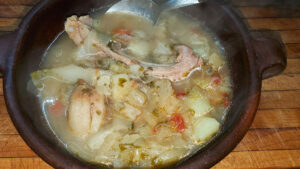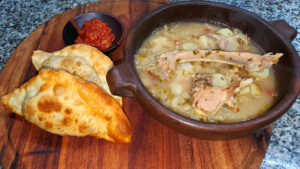Ever onward! We’ve headed back to Africa and a country that when I was a kid was a French territory called French Somaliland, and then later in my late teens, briefly, the tongue tangling “French Territory of the Afars and the Issas”. I have to admit, I don’t recall ever hearing it called that, but I wasn’t really paying attention. Winning its independence from France in 1977, the country was renamed after its capital city, Djibouti, a word that in both the Somali and Afar languages means “plateau”.  Officially, however, Arabic and French are the languages of the country.
Officially, however, Arabic and French are the languages of the country.
Located in the northeast of Africa, this coastal country controls access between the Red Sea and the Indian Ocean, making it an important political ally for shipping. It’s not one of the largest countries in the world, falling in size somewhere between New Jersey and New Hampshire, at roughly 9,000 square miles. It has a population of less than a million people, two-thirds of whom live in the eponymous capital city, the metropolitan area of which takes up a mere 27 square miles of the country, giving it a population density of more than double that, of, say, New York City. For over a millennium the country has been predominately Muslim, with roughly 94% of the population being so, the remaining 6% are one form or another of Christian.
The cuisine is primarily Somali in origin (the non-French part of Somaliland now being its own country as well, we’ll get to that in the S’s). There are also strong influences from neighboring Yemen, some from the historic Afar and Issa indigenous populations, a bit of French thrown in, as well as some South Asian hints. Stews (and some soups, though tending towards more stew-like) are a big part of the cuisine, and Middle Eastern spicing, however one might define that, is not surprisingly common.
For our bread, returning to the origins of this project, I went with the empanada-like Sambuussas (variously spelled as Sambus, Sambousa, Samosa, showing a bit of that South Asian influence). I decided to accompany it with the traditional hot sauce, Zuuqar. On the soup side, the national soup of Fah-Fah was the obvious choice, which, though it’s traditionally paired with a local flatbread called canjeero, I decided against, partially because I wanted to make the more empanada style dish, and partially because it’s a recipe almost identical to the flatbread kisra that I made for the recent entry on Chad, just slightly thicker, and more commonly made with either sorghum or teff flour.
Pretty much the simplest dough I’ve made in this project, it’s literally nothing but flour, a pinch of salt, and enough water to bring it together into a stiff dough (roughly a quarter, by weight, of the flour). Let sit to relax while you make the filling.
Sambuussas are most commonly filled with lamb, though goat or beef are apparently used as well. Here we have about half a pound of ground lamb, a small onion, a leek, a half teaspoon of cumin, and a quarter teaspoon each of salt and pepper, and just a tablespoon of olive oil for the cooking.
In a skillet, brown the lamb in the oil for about 2-3 minutes, then add the rest of the ingredients (onion and leek chopped finely), and cook until the vegetables are soft, about 5-6 minutes. Adjust seasoning if needed. Set aside to cool.
At this point I actually turned aside, while the dough was resting and the filling cooling, to make the hot sauce, but just for continuity…. Divide the dough into a dozen equal balls, and roll out into rough squares. Divide the filling between them. Then lightly wet the edge along two sides with water and fold over into a rough triangle, sealing them well. Traditionally I think they might make more of an effort at sharp corners to really get the triangle shape, but mine ended up more rounded.
Fry in neutral oil on both sides until golden brown, then…
…drain on paper towel.
Back to our hot sauce, zuuqar. We have half a can of crushed tomato, some garlic, a hot chili (I don’t have access to the chilies they use in Djibouti, so I went with a rocoto, but whatever hot, or mild, chili you want to use, depending on how spicy you want to make it). There’s also a spoonful of vinegar, one of olive oil, and about half a teaspoon of ground cumin. None of the recipes I found mentioned salt, which seemed interesting. I don’t know if it’s just assumed that anyone cooking knows to add salt, or if it’s really made without. I ended up adding about a quarter teaspoon, just to brighten it up, at the end.
Finely chop the chili and garlic and cook them in the oil for a couple of minutes, until the garlic starts to turn golden. Add the tomato and cumin, and over low heat, cook down for about 10-12 minutes until it thickens up. At this point, I added the salt, just because I felt it needed it. Set aside to serve with the sambuussas.
Now, I actually made the soup first. It takes about an hour to make, and I made it in the morning and then the rest of the things in the afternoon, so all was ready for dinner. I like letting soups sit around and develop their flavor a bit. Here we have goat meat, on the bone (some recipes call for off the bone, but most didn’t). It just happened I had a rack of baby goat ribs in the freezer (doesn’t everyone?), so, cut into individual “chops” and pieces. Plus a potato, a quarter head of cabbage, a leek, a small onion, some garlic, a hot chili, and cilantro. Not in the photo, because it was sitting to the side and I missed putting it on the board, the other half of the can of crushed tomatoes. Salt and pepper as well. I was surprised that this “national dish” makes no use of the much touted traditional spices, like cumin, saffron, and cinnamon. They’d seem a natural flavoring for this soup.
Cut everything up – peel and dice the potato, thinly slice the leek, cut the cabbage into strips, finely chop the garlic, chili, and cilantro. If you’re using a fresh tomato rather than canned crushed, crush or chop up the tomato. Put everything into a pot, add some salt and pepper (I used about two teaspoons of salt and half a teaspoon of pepper), and cover with water. Bring to a boil, reduce the heat to low, and cook for an hour.
And, this is the soup after an hour of cooking down. It’s quite thick, as I said earlier, almost stew-like. Adjust seasoning.
Ready to serve!
So here’s dinner! A bowl of the fah-fah, a couple of sambuussas, and a little of the zuuqar hot sauce to spoon onto, into, and/or wherever you like. I found the soup to be sufficiently spicy to not add more to it, but it was perfect spooning a little onto each bite of the pastries. I really like the those, with the accompanying sauce. I found the soup to be a bit too oniony for my tastes. Between the onion and leek, they just seem to overpower the goat meat and cabbage. I’d cut them back, or add more of the latter. And it also just seemed to be to be missing some flavorful seasonings. Almost all the aromatic flavor comes from the chili and garlic. Perhaps I didn’t search around enough to find a version of fah-fah with more spices, or perhaps that’s just the way it is.
Next time, we’re on to Dominica, not to be confused with the Dominican Republic, which will swiftly follow it, closing out the D’s.
